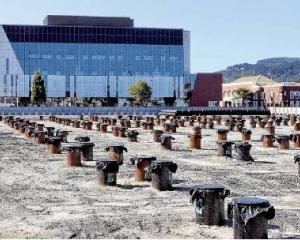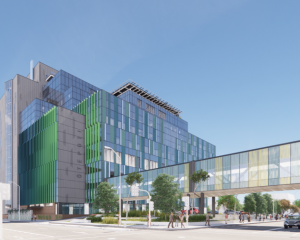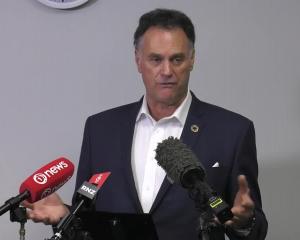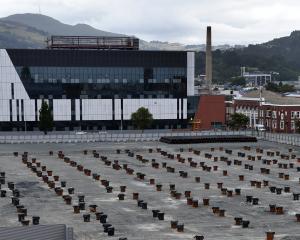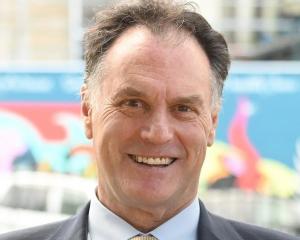The Dunedin hospital inpatient building is going ahead and there will be activity on site by the middle of this year, the government has announced.
"We are cracking on with it ... because this region is critically important to our country and government," new Health Minister Simeon Brown said at a press conference in Dunedin yesterday.
Speaking over the clamour of hospital campaigners outside, the minister said the government had listened to the people of Otago and Southland who had sent a "very clear message".
He could confirm with "certainty" the 11-floor building on the old Cadbury factory site would happen.
"We are focused on delivery of a safe, modern hospital ... that is future-proofed for growth with no change to the number of floors. It will provide clinical staff with world-class facilities."
There will be 22 theatres rising to 24 "over time", an expanded emergency department with 58 spaces and cutting-edge diagnostic technology.
There is enough space for a PET scanner and its inclusion can now be considered.
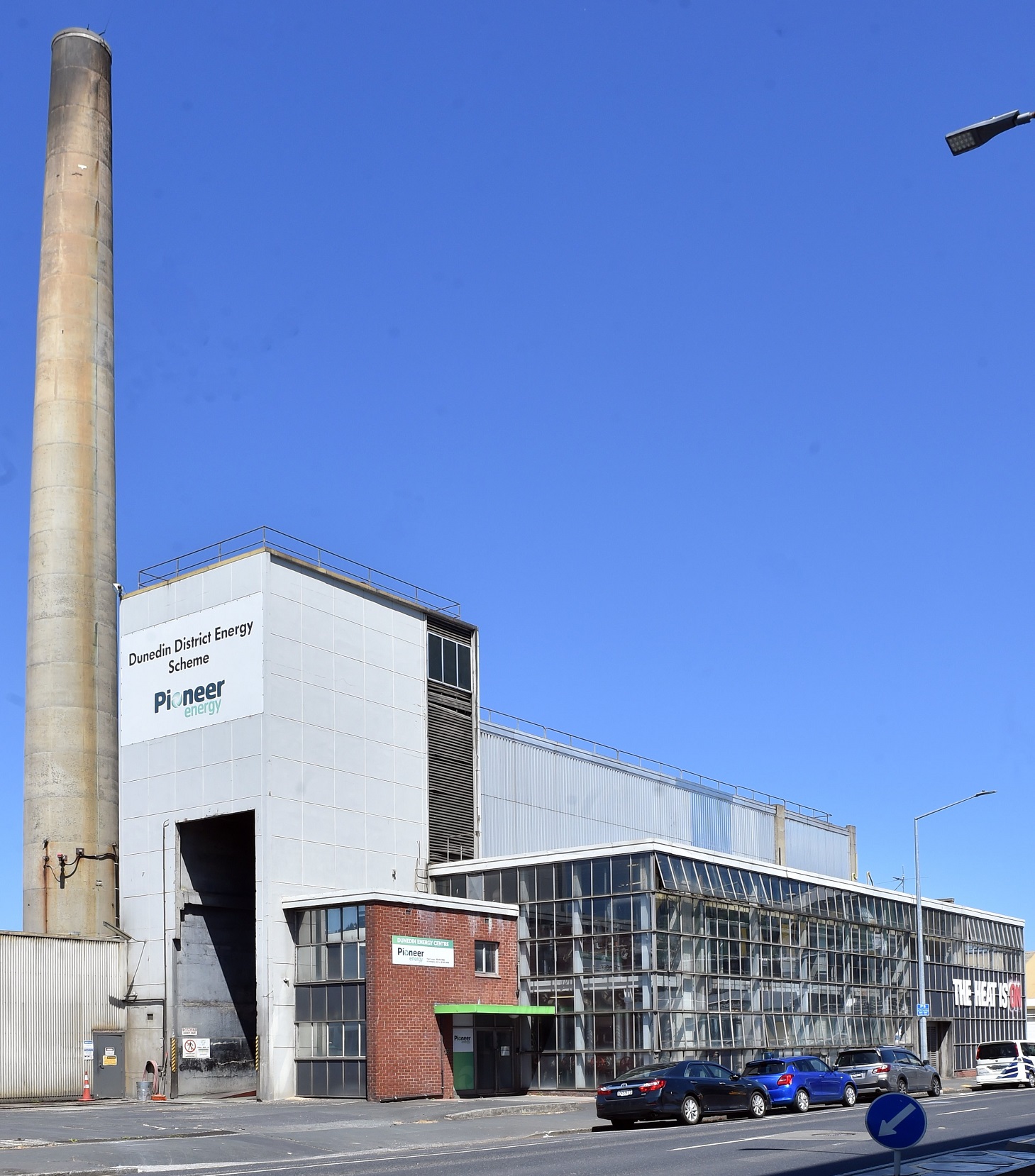
Sources had indicated the sixth floor might be chopped but Mr Brown said all floors would go ahead, the budget remained $1.88 billion and the hospital would be built by 2031.
The hospital will open with 47 fewer overnight beds than previously promised but will have enough space to expand bed numbers "over time" to levels similar to the original plan.
There will be 351 overnight beds on opening day plus space to increase beds to 404.
In 2022, the previous Labour government said there would be 398 overnight beds on opening day plus space to increase beds to 410.
The current hospital has 396 beds but it is understood only 329 are staffed.
The new hospital will also include 20 surgical short-stay beds.
Co-leader of the hospital’s Clinical Transformation Group Dr Sheila Barnett said clinicians were "comfortable" with the inpatient building’s design and it was "reasonable" to fit out some areas later.
"The number of floors is preserved, so the building can still reach its full potential."
However, she indicated there may be some shared use of some areas between departments and there could be fewer mental health beds for the elderly as models of care for that service were developed.
The minister said the next step was to conclude negotiations with Australian construction giant CPB.
CPB won an "early stage engagement" contract in 2021 to plan the build but it has not yet been announced the company will co-ordinate the build.
There have been ongoing concerns the government lacks expertise to deliver large infrastructure.
The hospital’s progress was red-flagged by Treasury reports and there have been leadership changes at Te Whatu Ora Health NZ (HNZ) and a project governance committee.
The previous National government, ousted by Labour in 2017, had promised the build for $1.4b by 2027. Between 2017 and 2024, the outpatient building was largely constructed and the inpatient building’s groundworks were completed.
Mr Brown said more expertise was being brought in. "We need to make sure we are much better at delivering infrastructure in New Zealand."
HNZ head of infrastructure Blake Lepper, also in Dunedin yesterday, said HNZ would continue leading and he was "looking across government to get the support we need ... so we can move quickly."
He was "grateful" for support from Crown Infrastructure Delivery, which helps agencies struggling to deliver infrastructure.

Mr Lepper hopes to save money by ditching a plan to have heatpump infrastructure in a Bow Lane building and instead use Pioneer Energy’s District Energy Scheme, which heats the existing hospital using woodchips. This would mean HNZ "can focus more of the budget on clinical spaces".
He said more details about the build would be released "once the procurement process has been completed".
Pioneer Energy general manager Peter McClean confirmed he was working with HNZ on potential heating solutions.
One health source said there was continued HNZ "indecision" about who would direct the project after the departure last year of programme director Tony Lloyd and there were ongoing concerns about inadequate expertise among HNZ staff and contracted consultants.
When asked about funding of hospital care in Queenstown Lakes, Central Otago and Invercargill, Mr Brown said "we need to have a long-term plan and that is one of the focus areas I want to get into."
HNZ Southern group director of operations Hamish Brown said yesterday documents about the hospital’s progress would be released soon.



